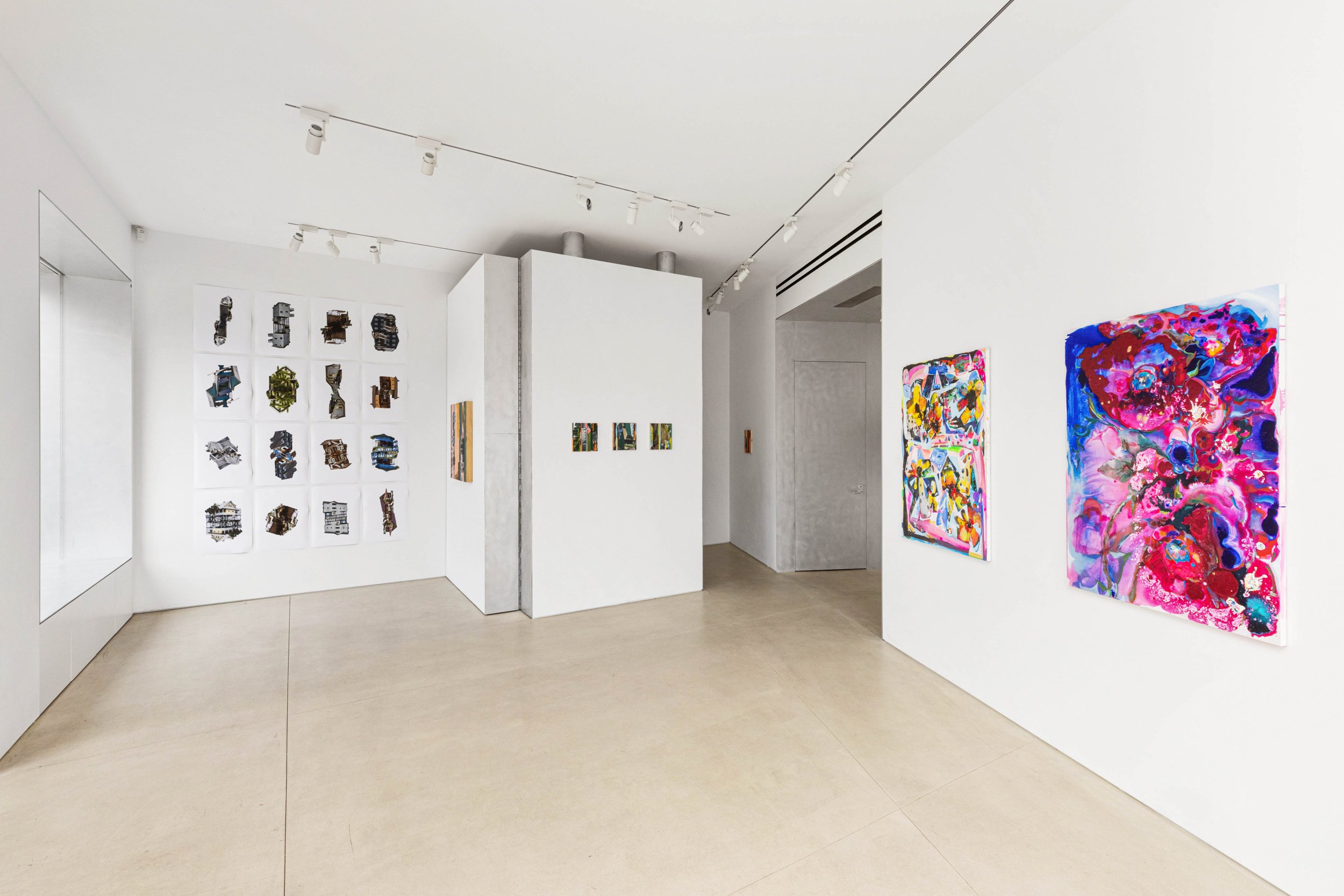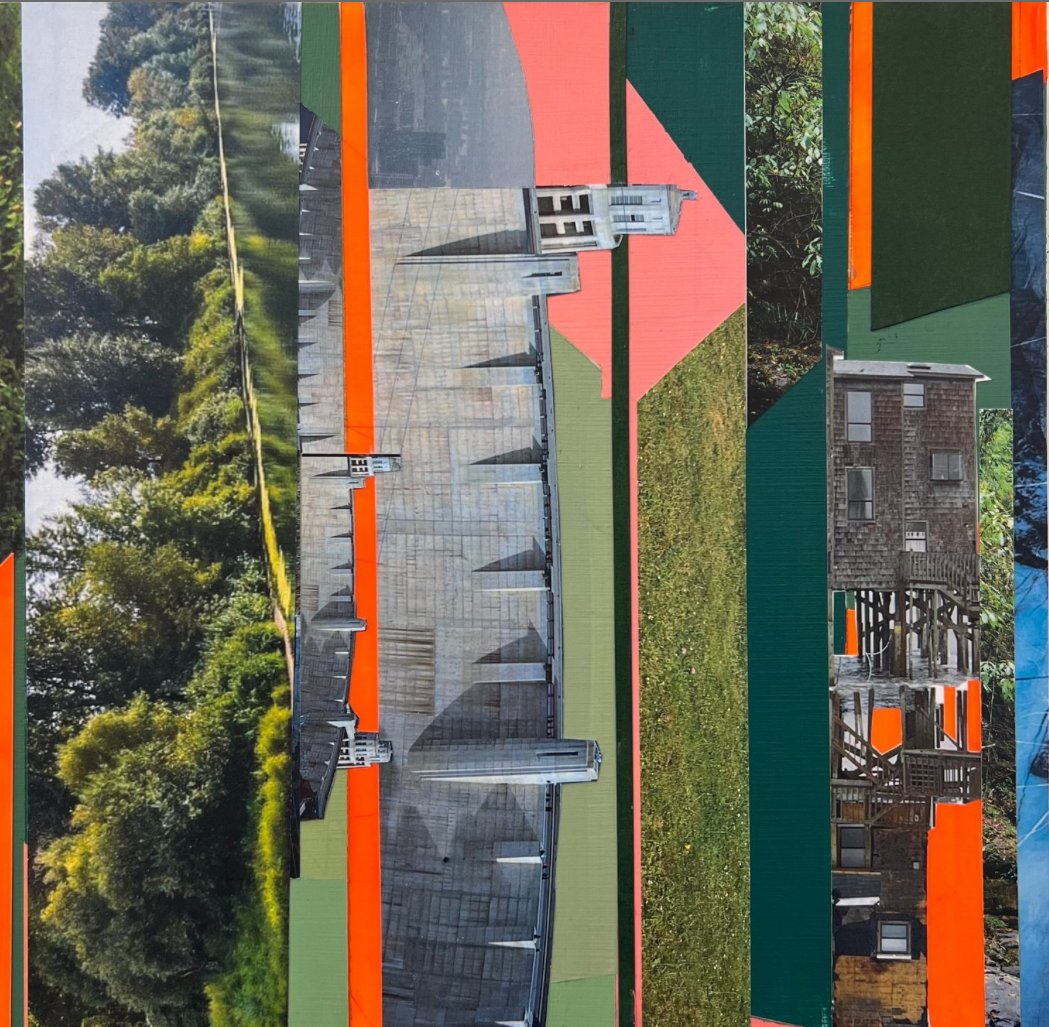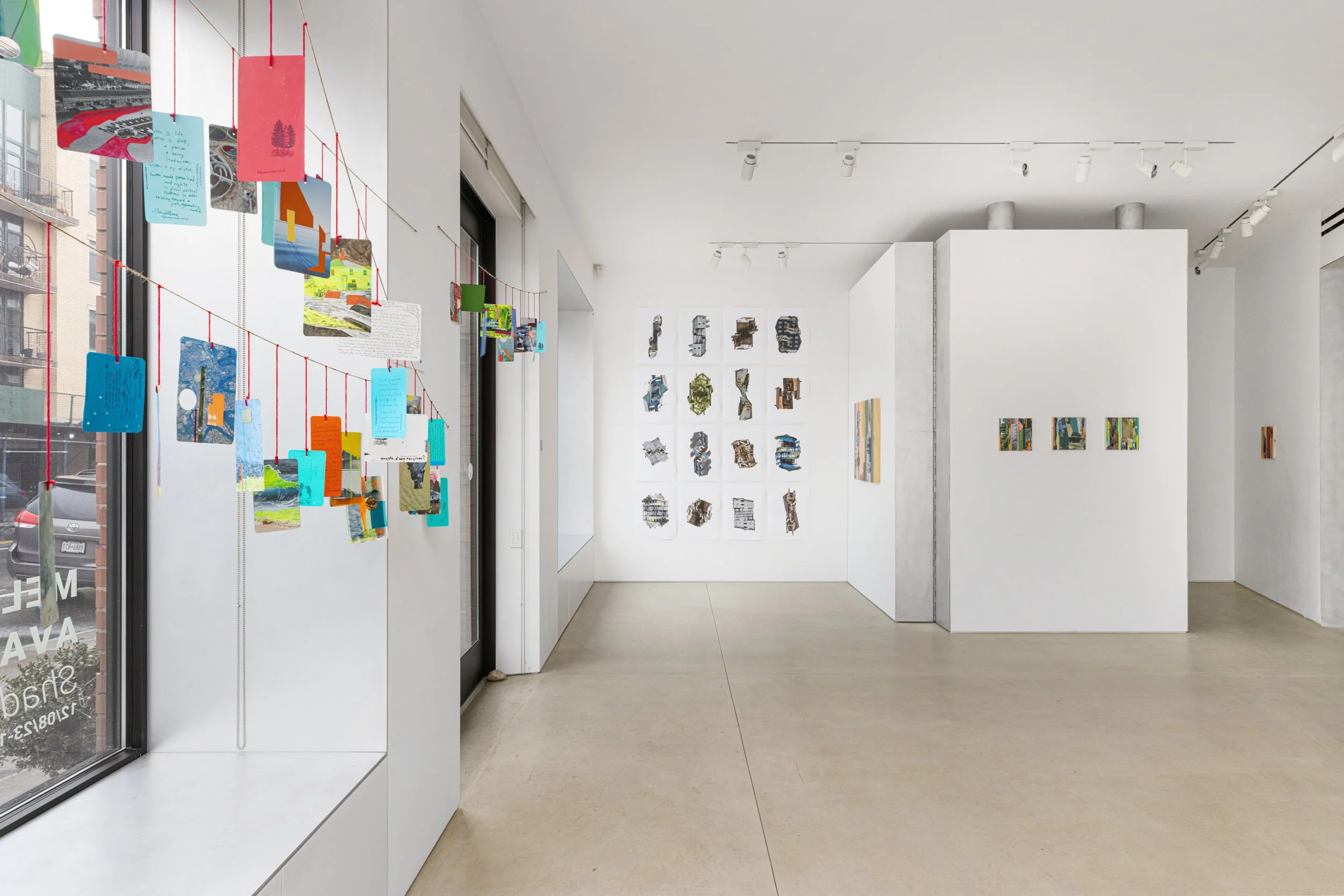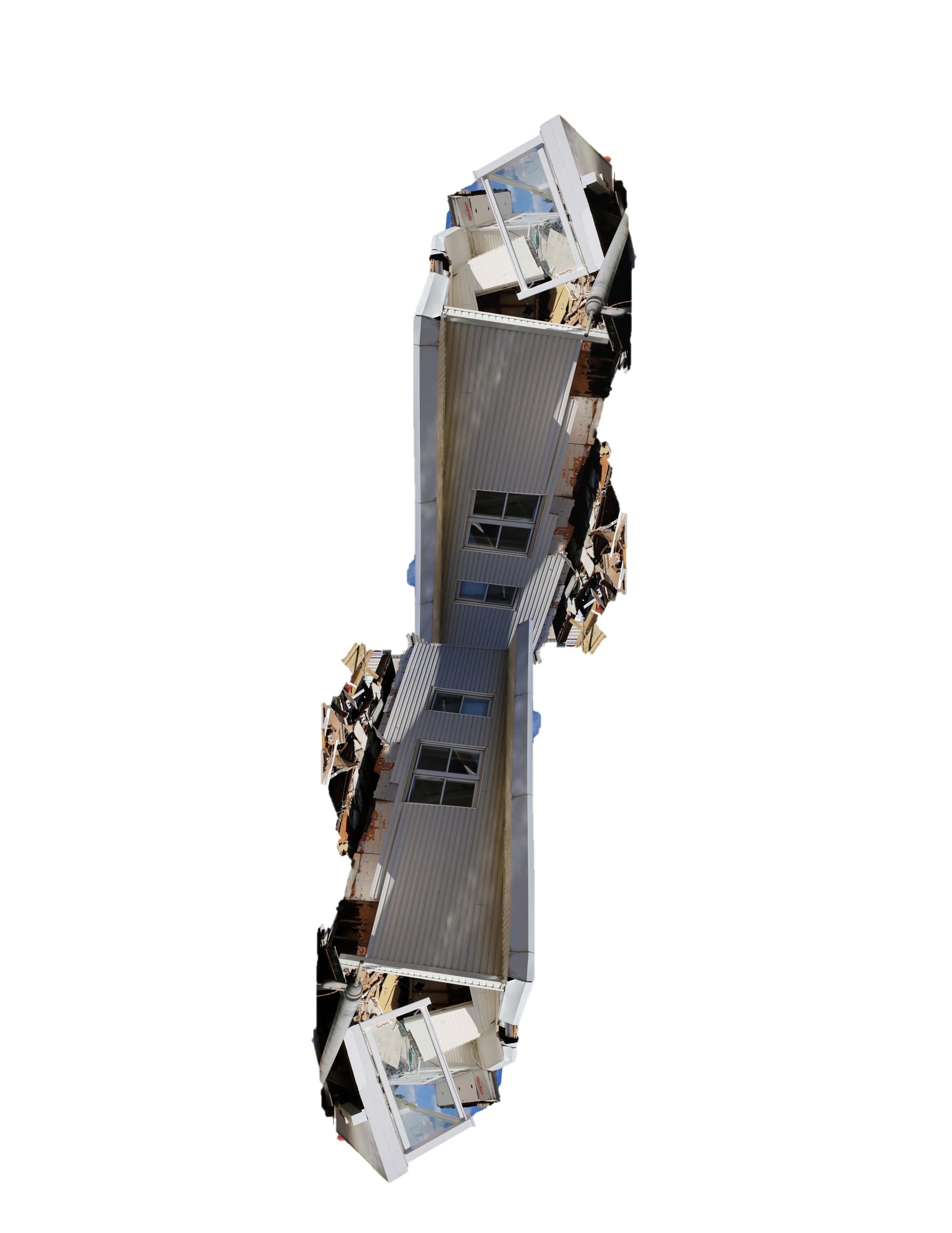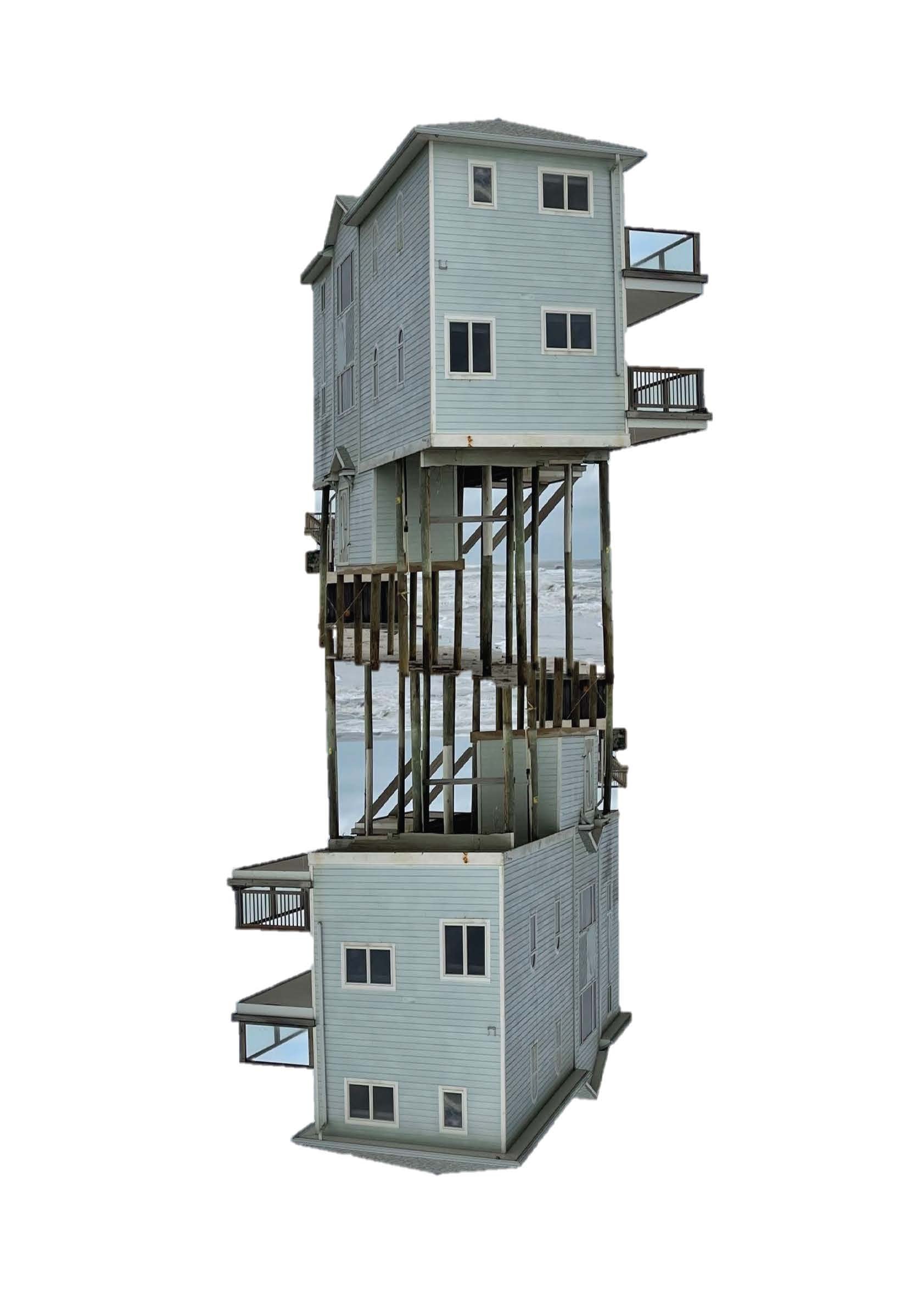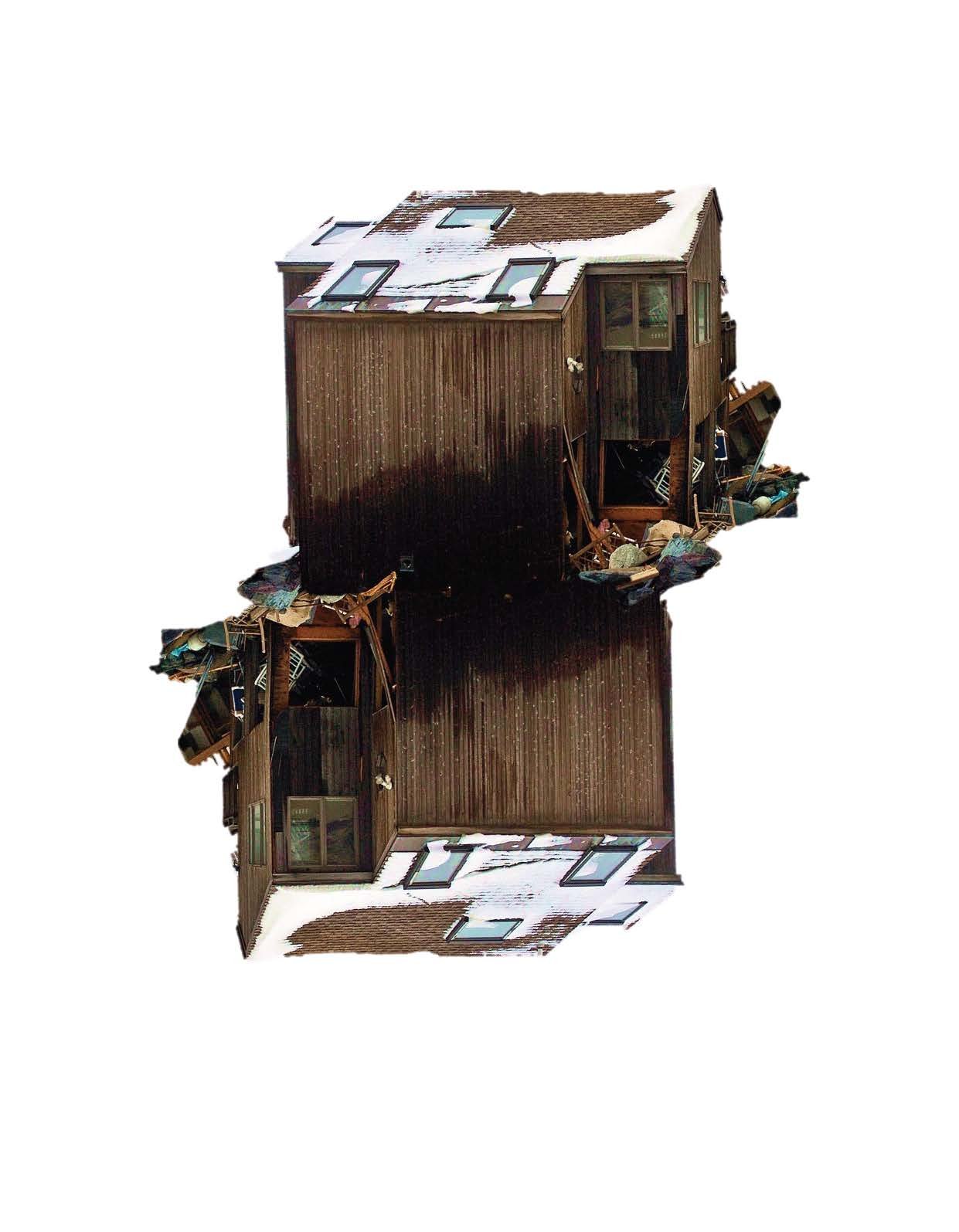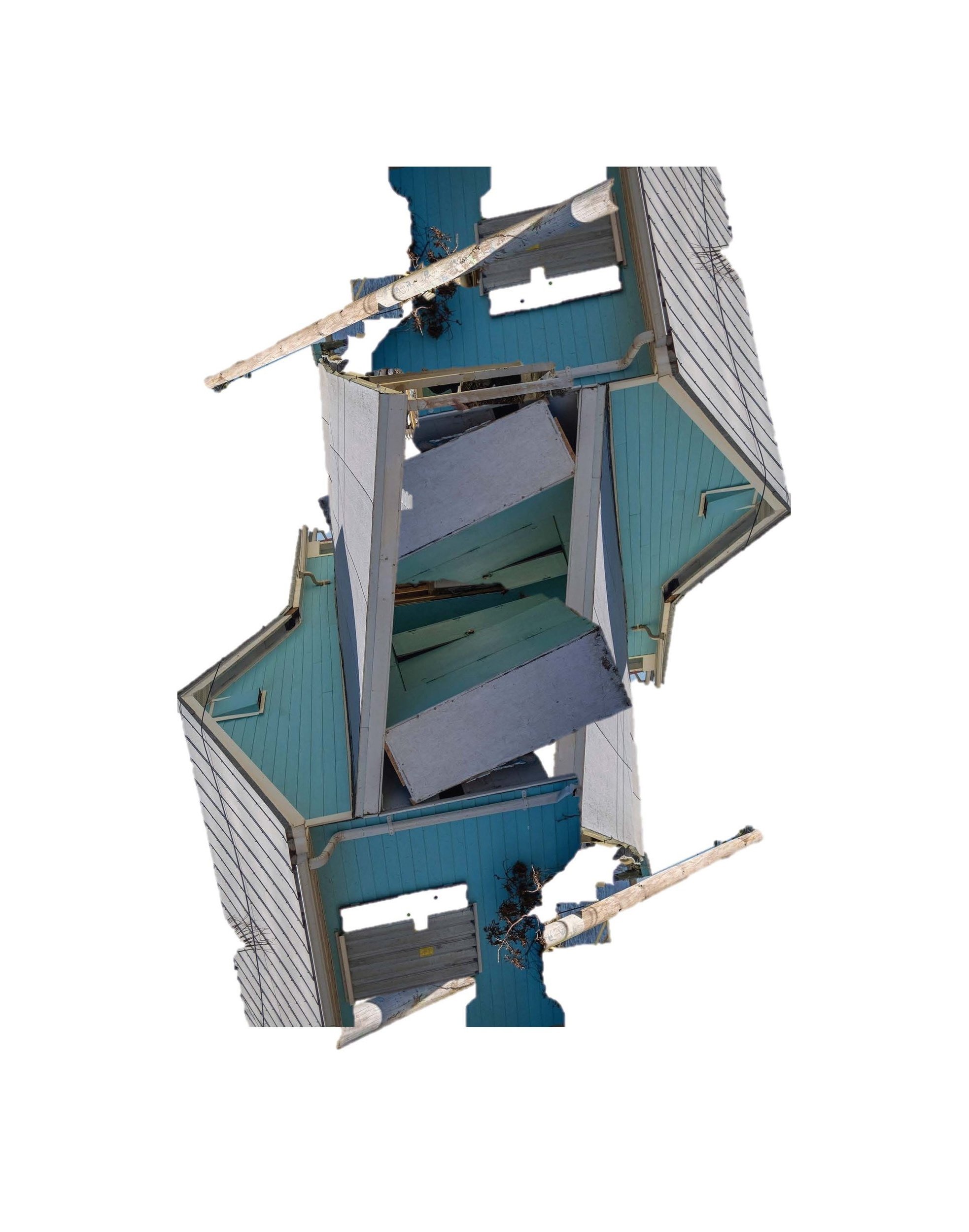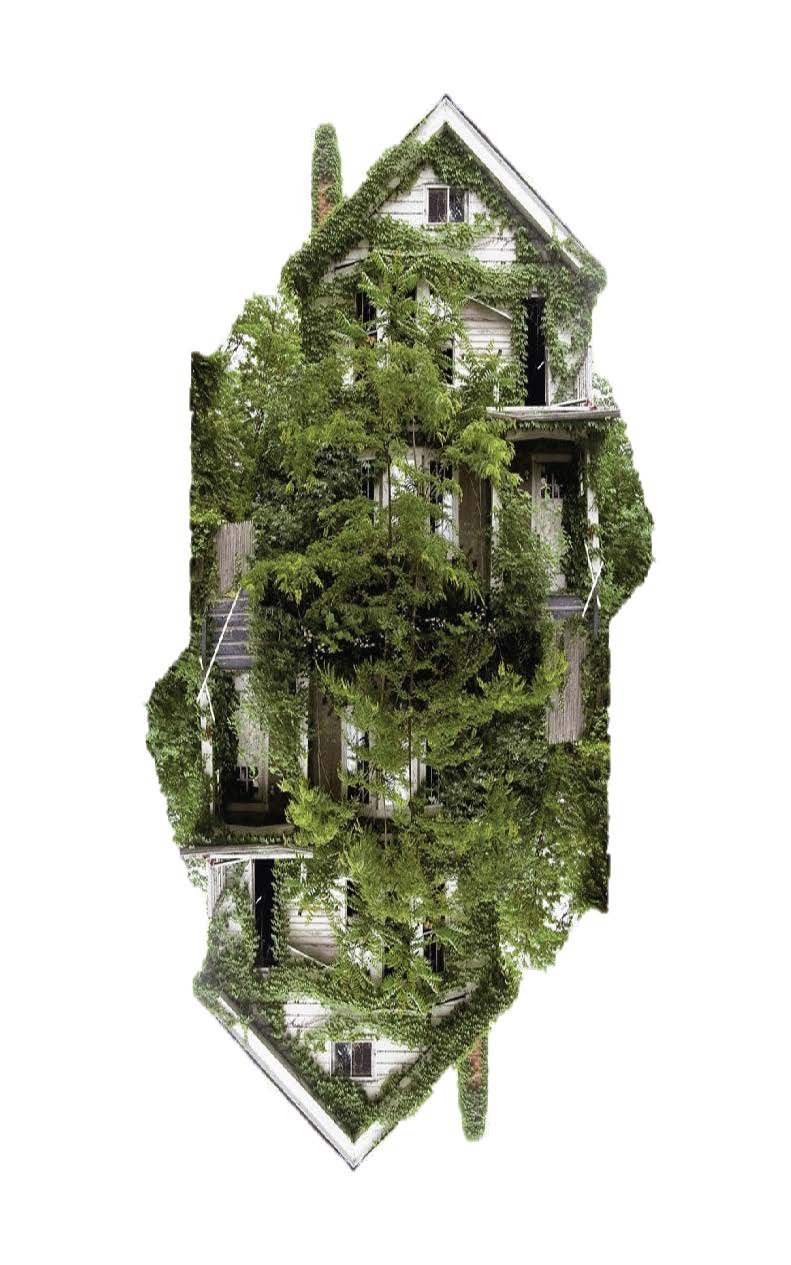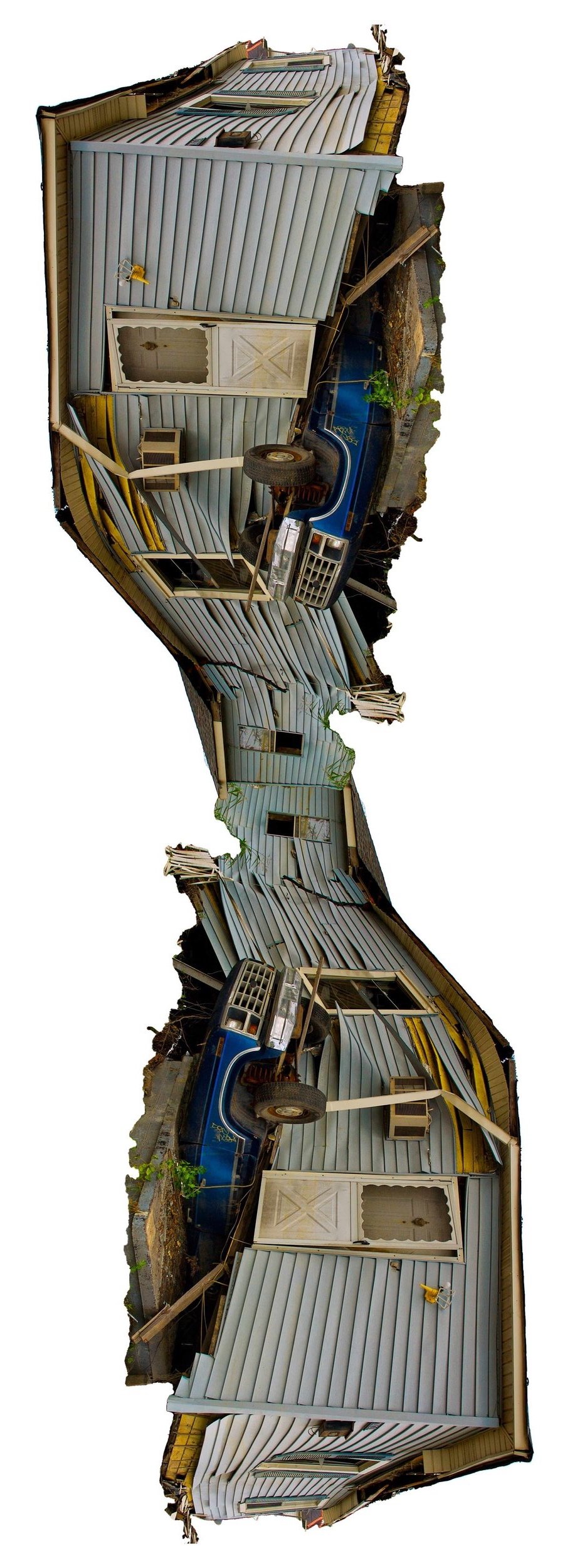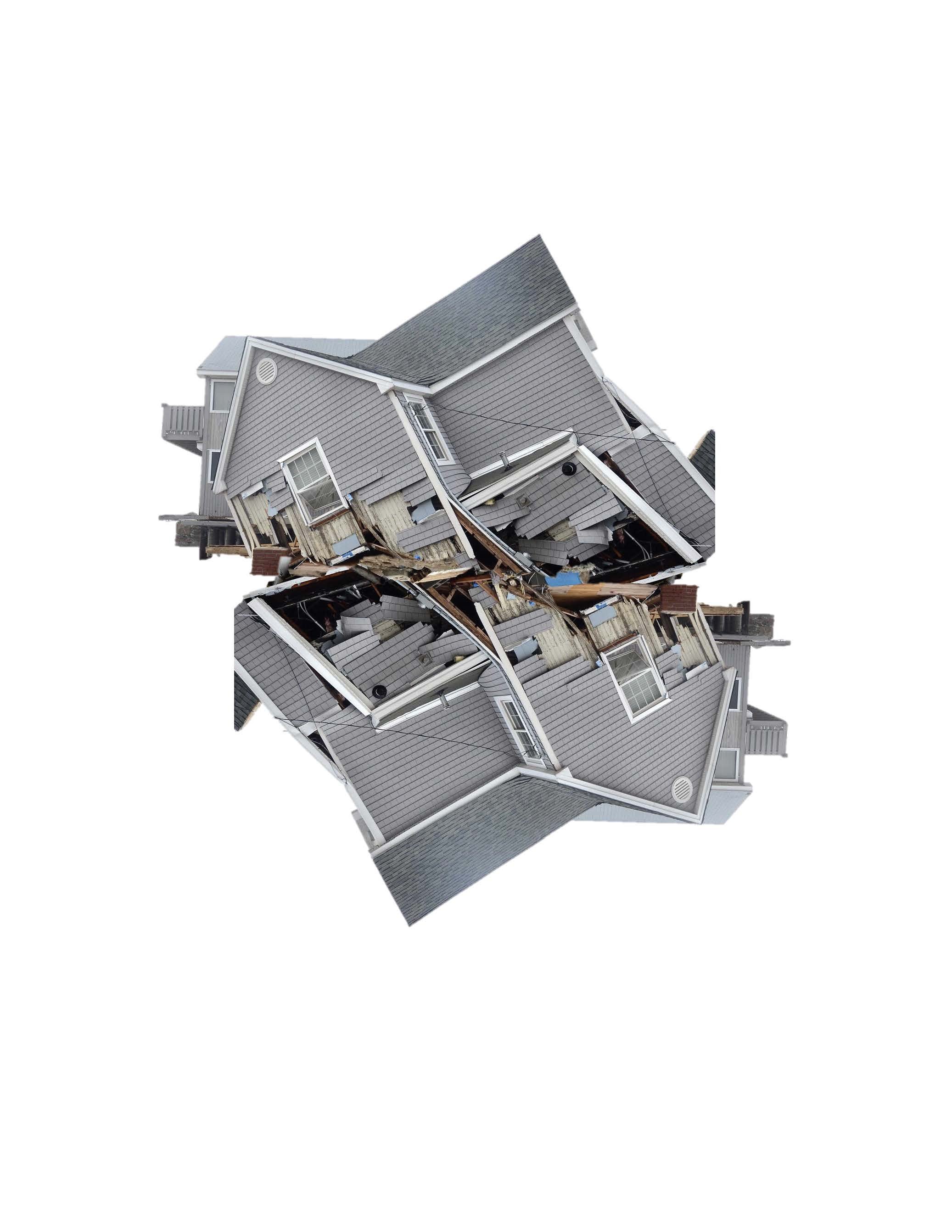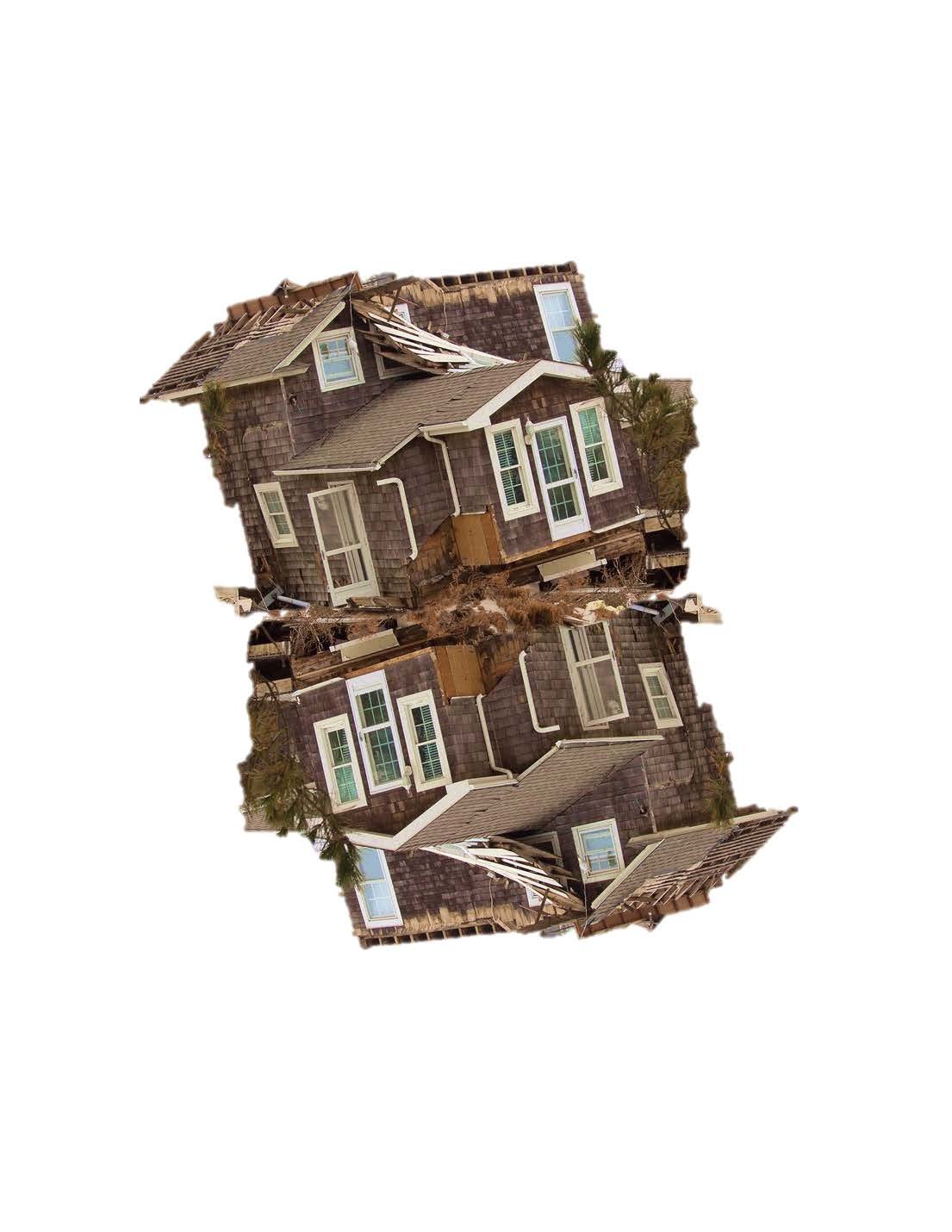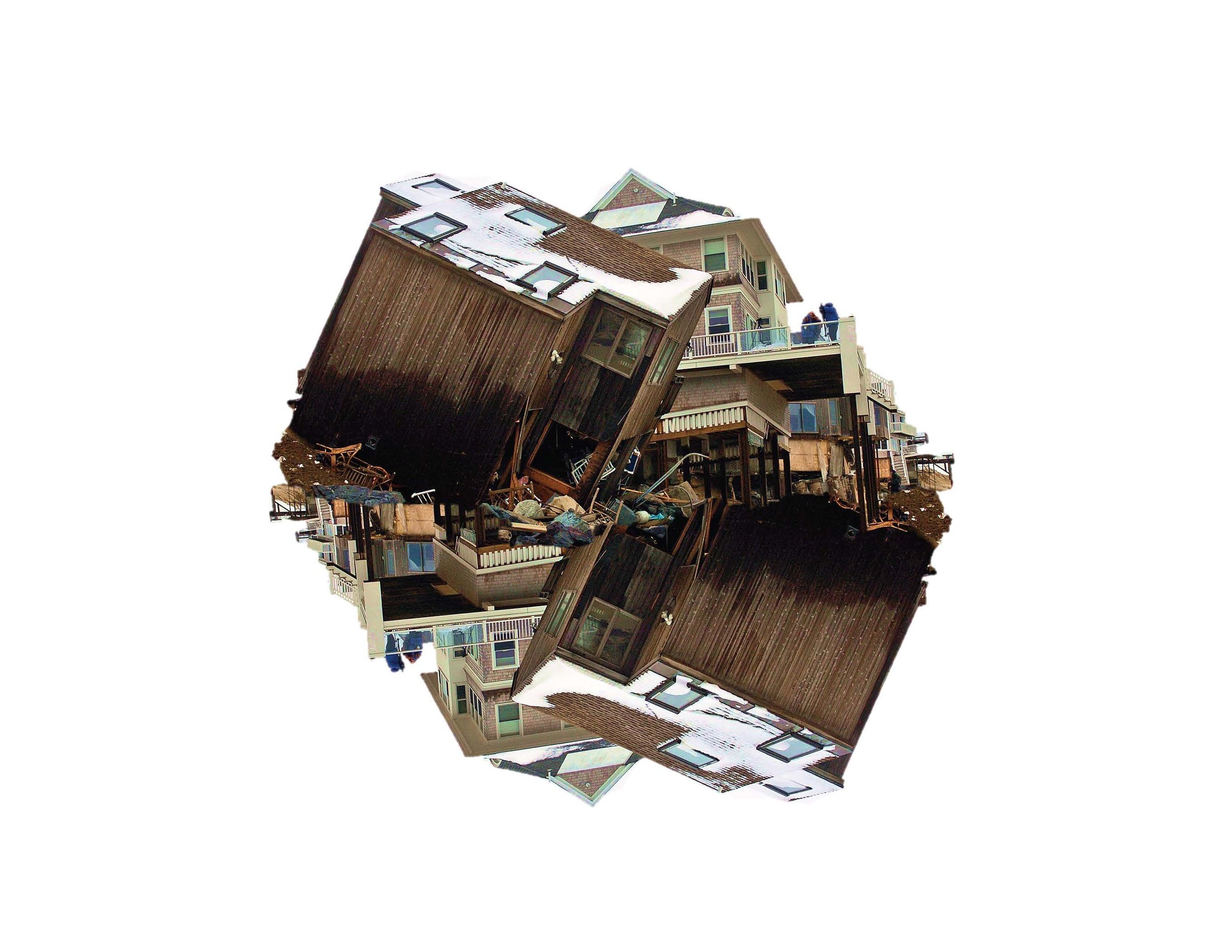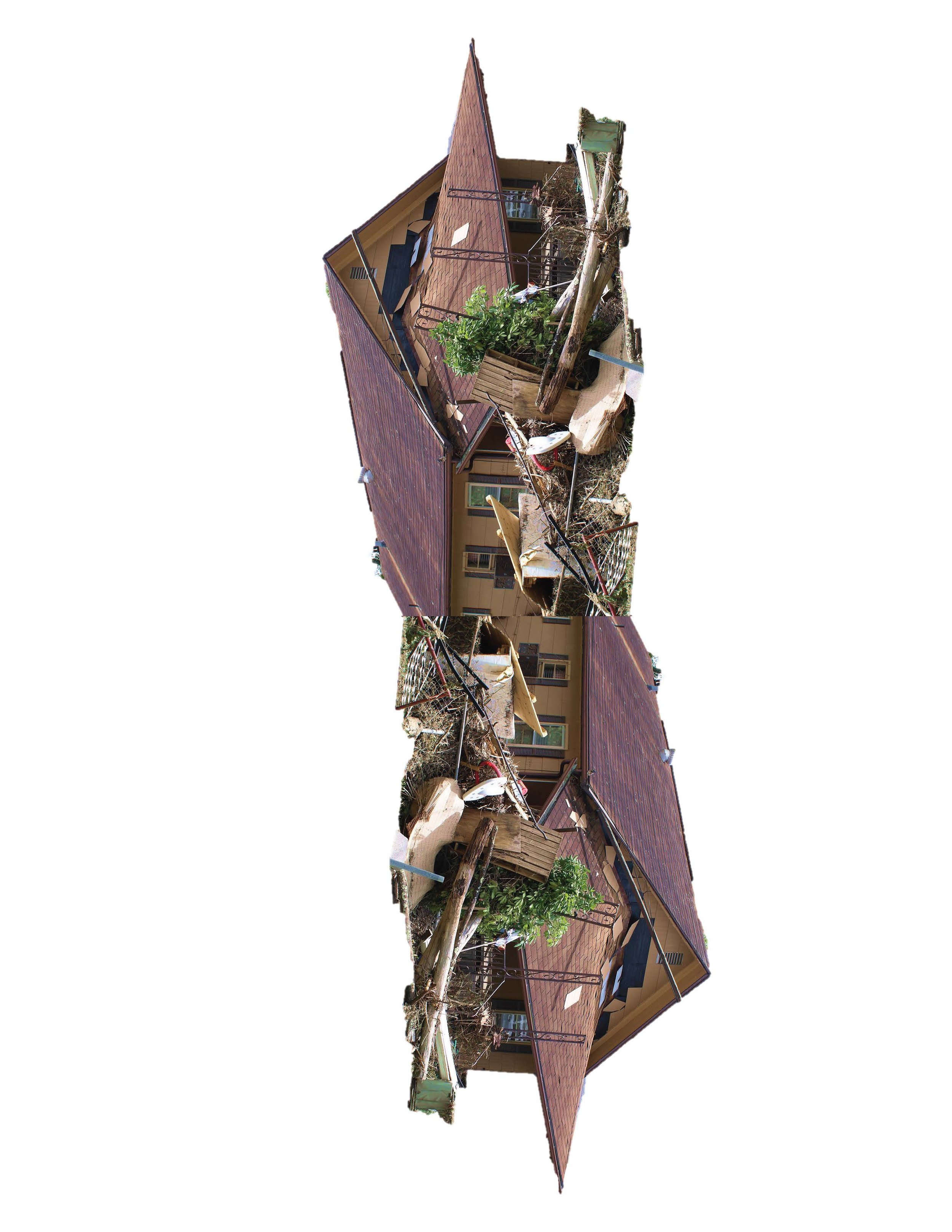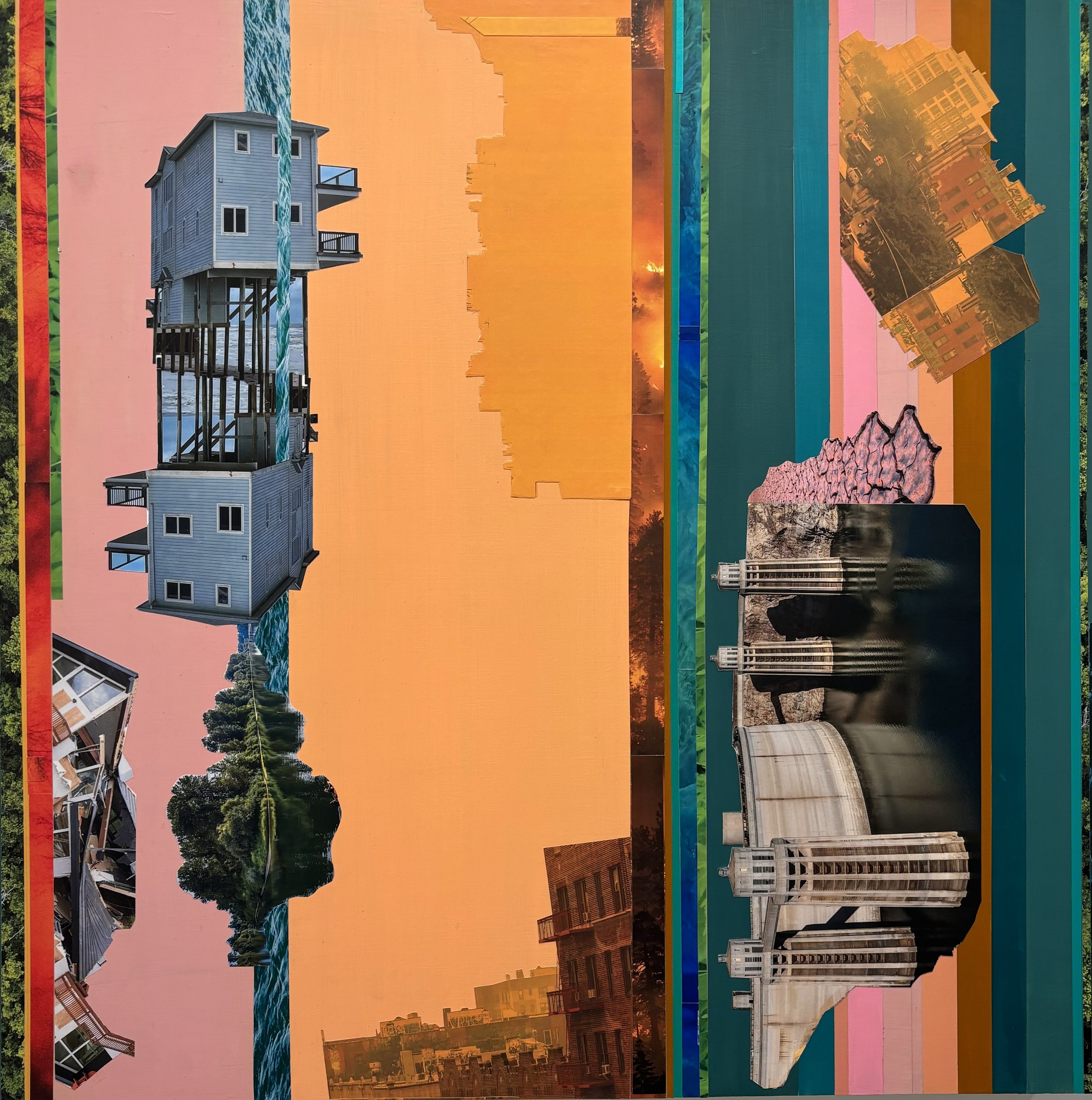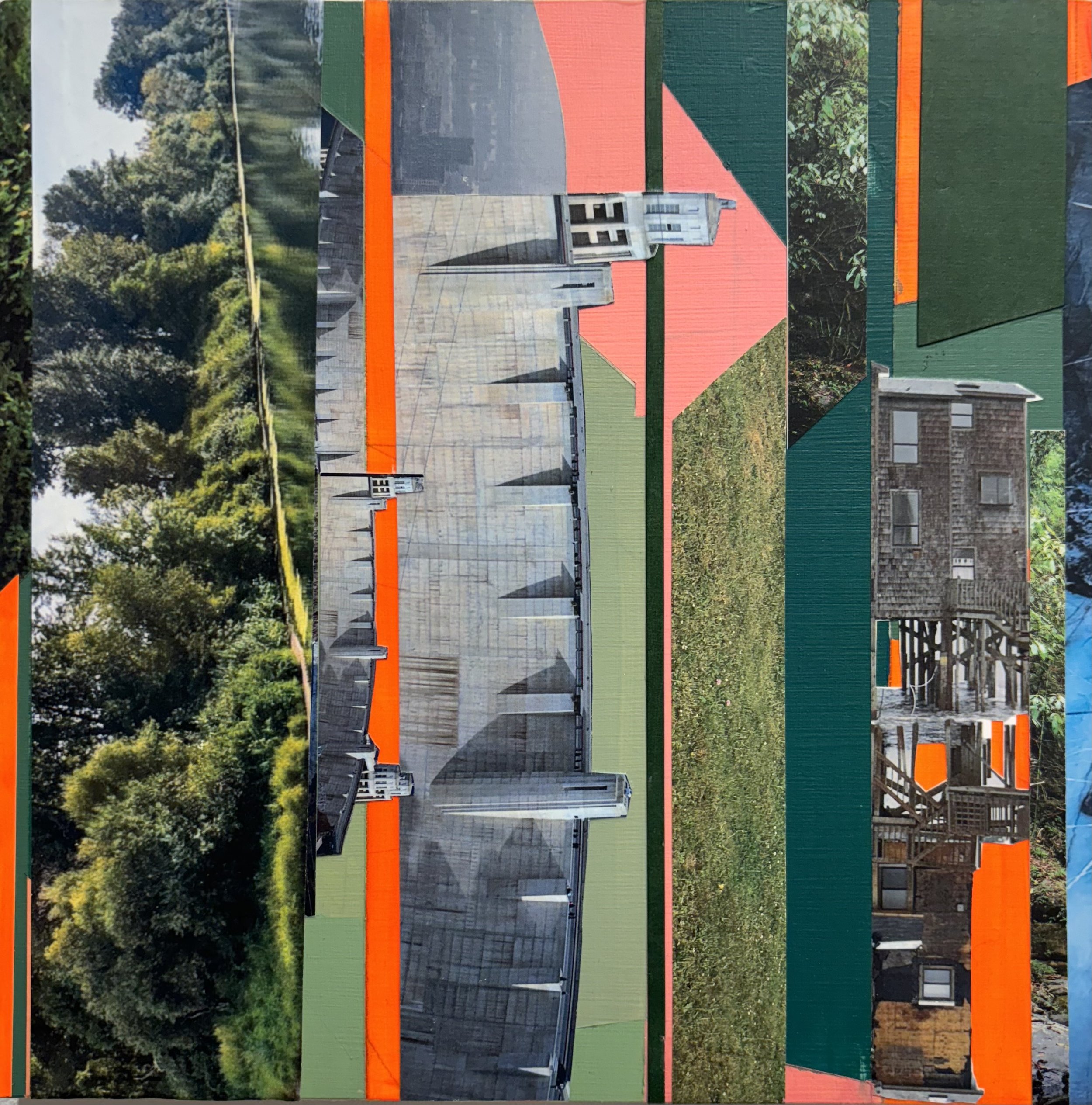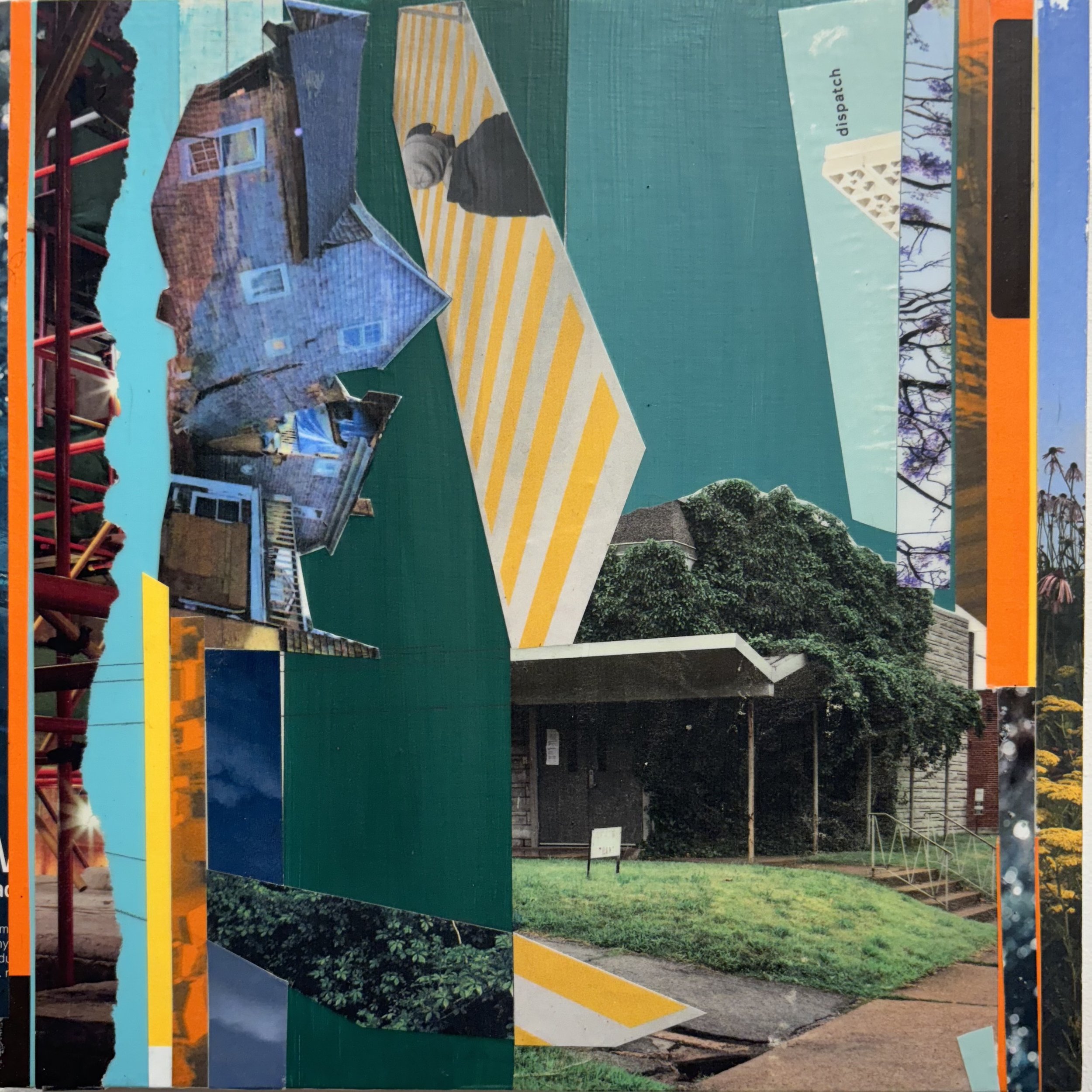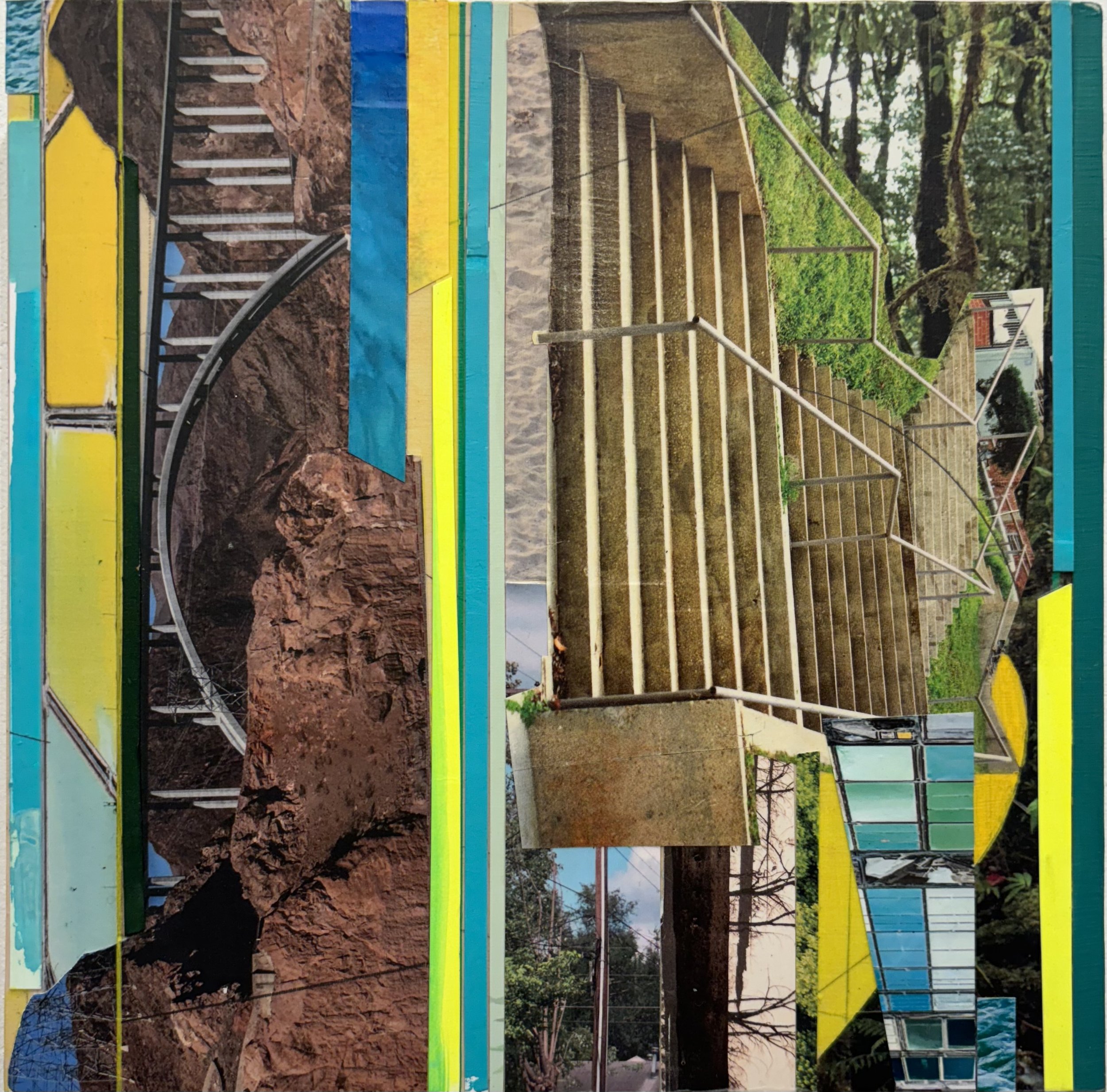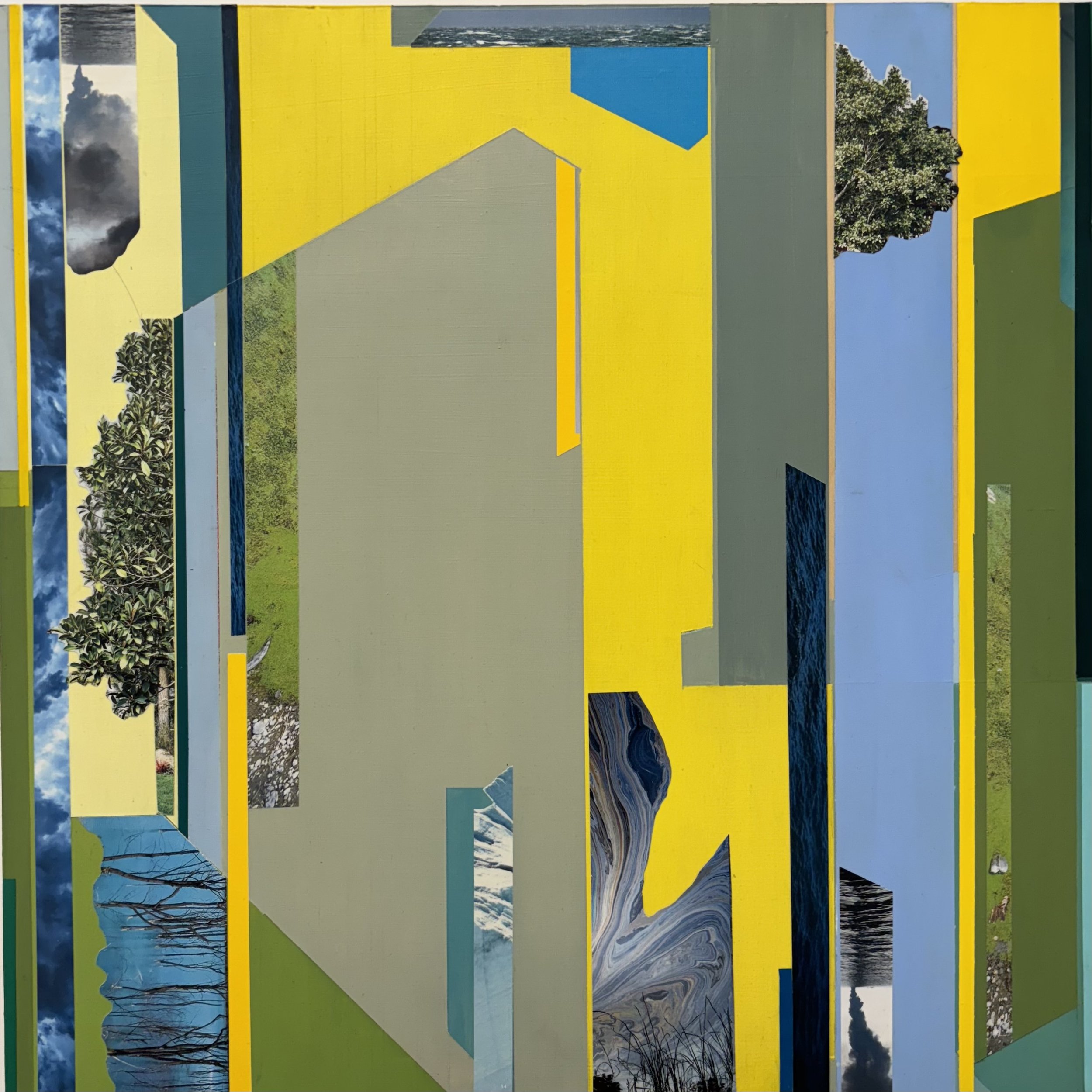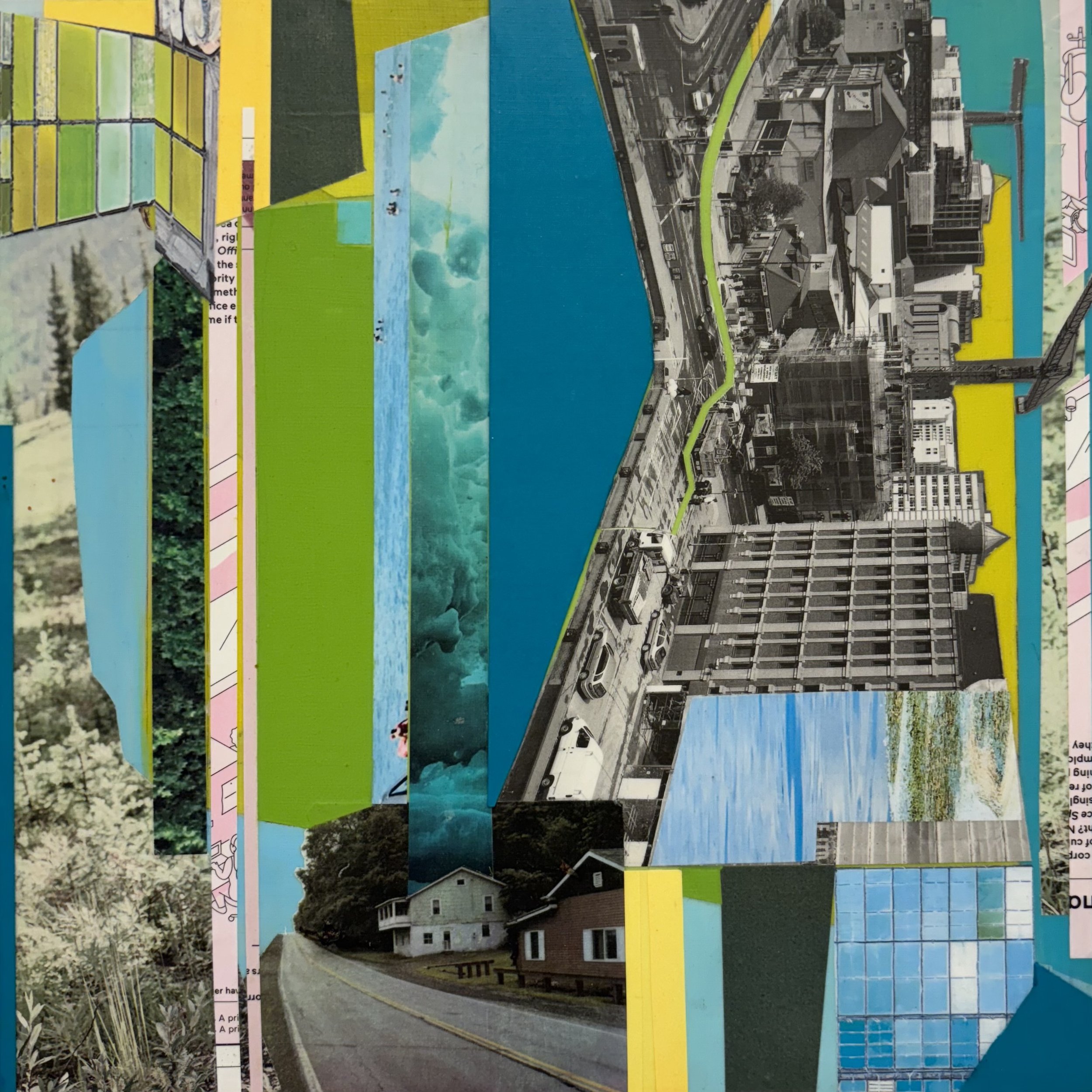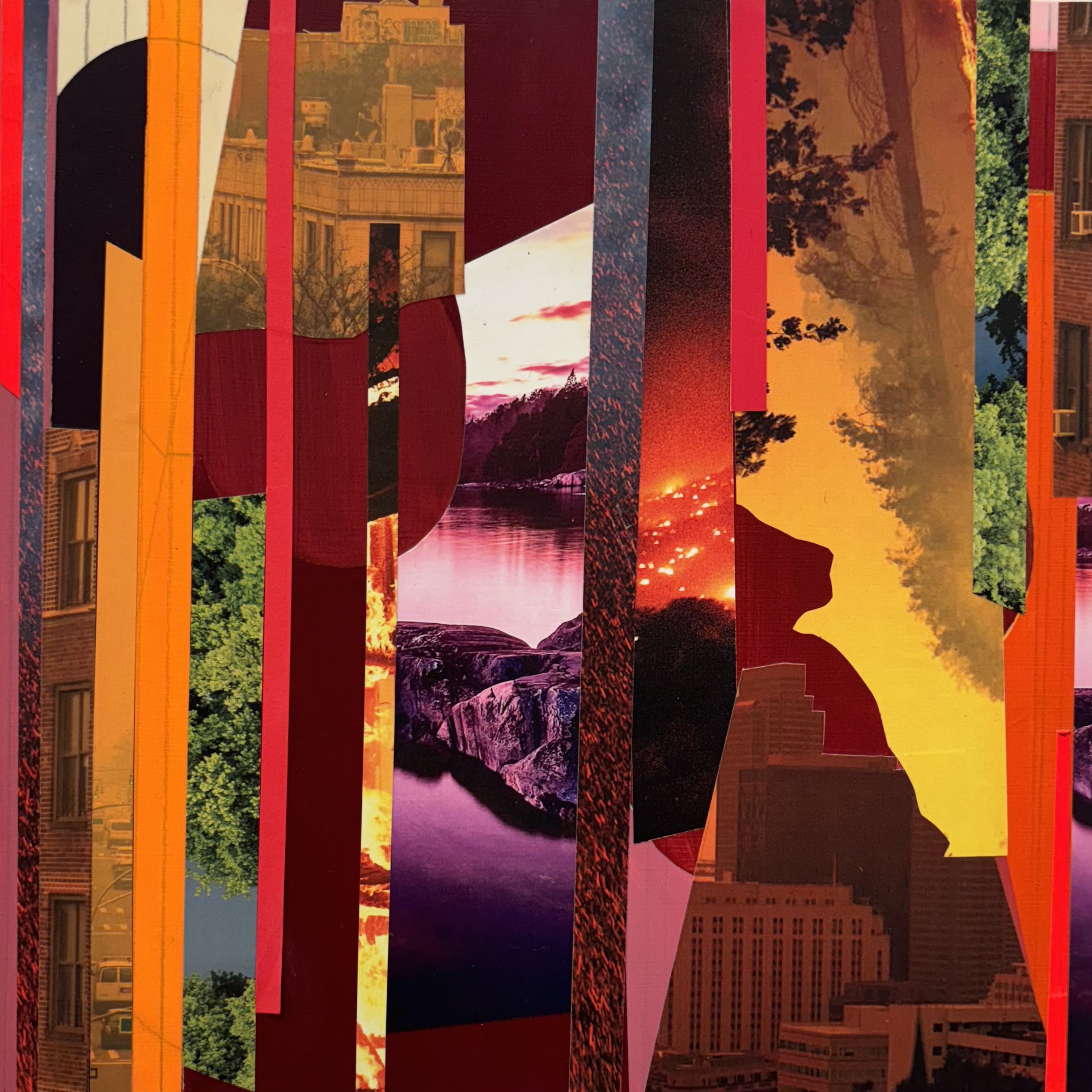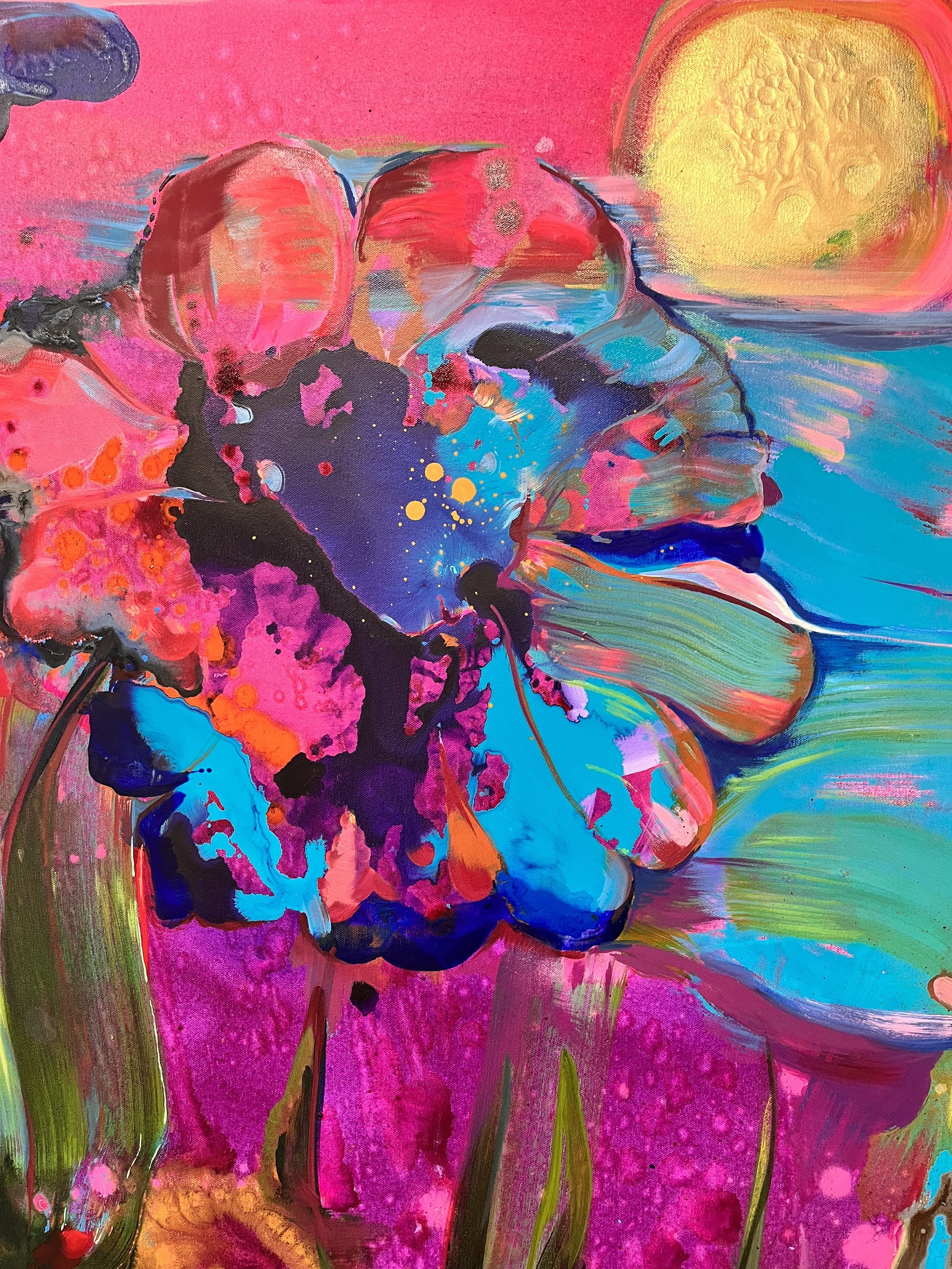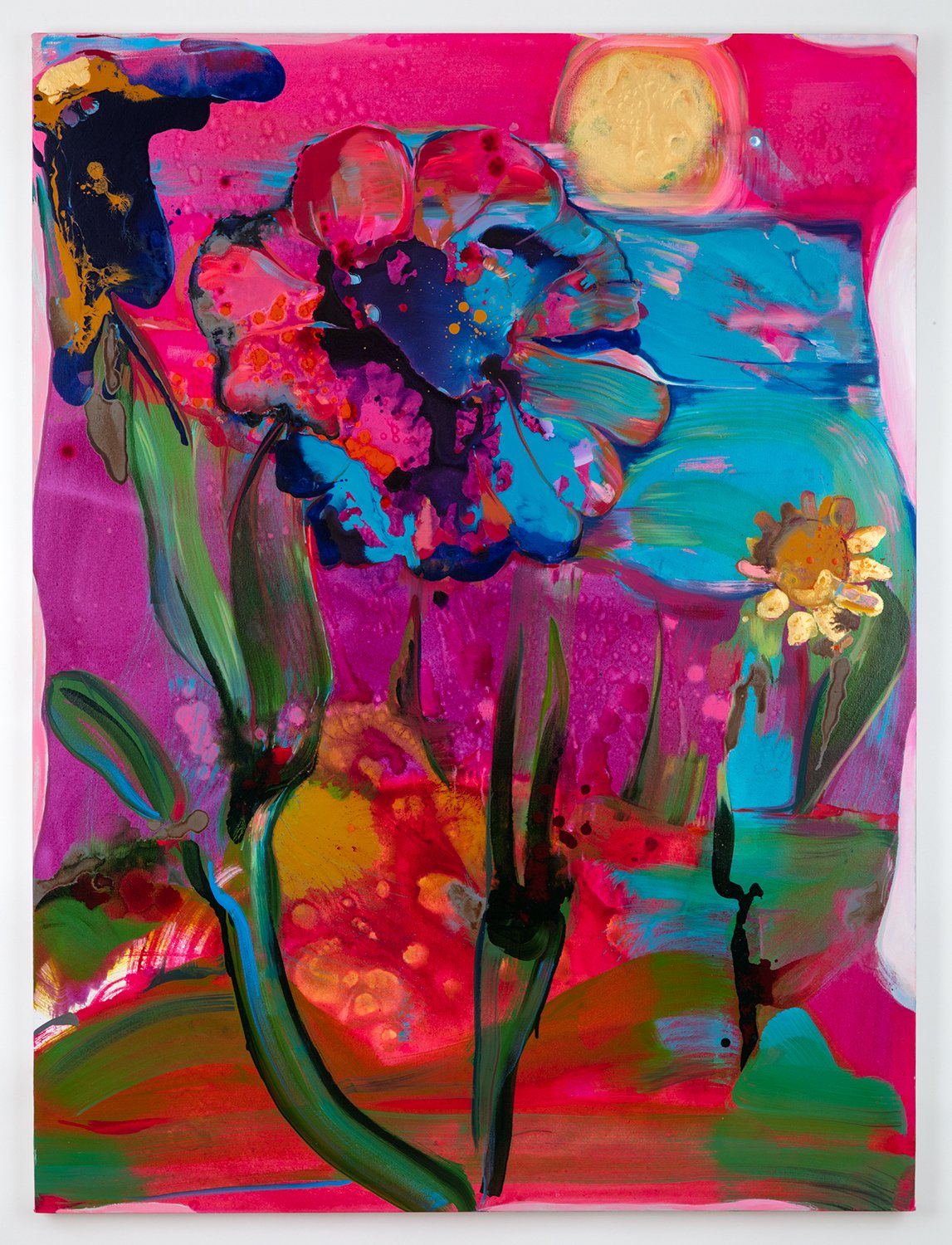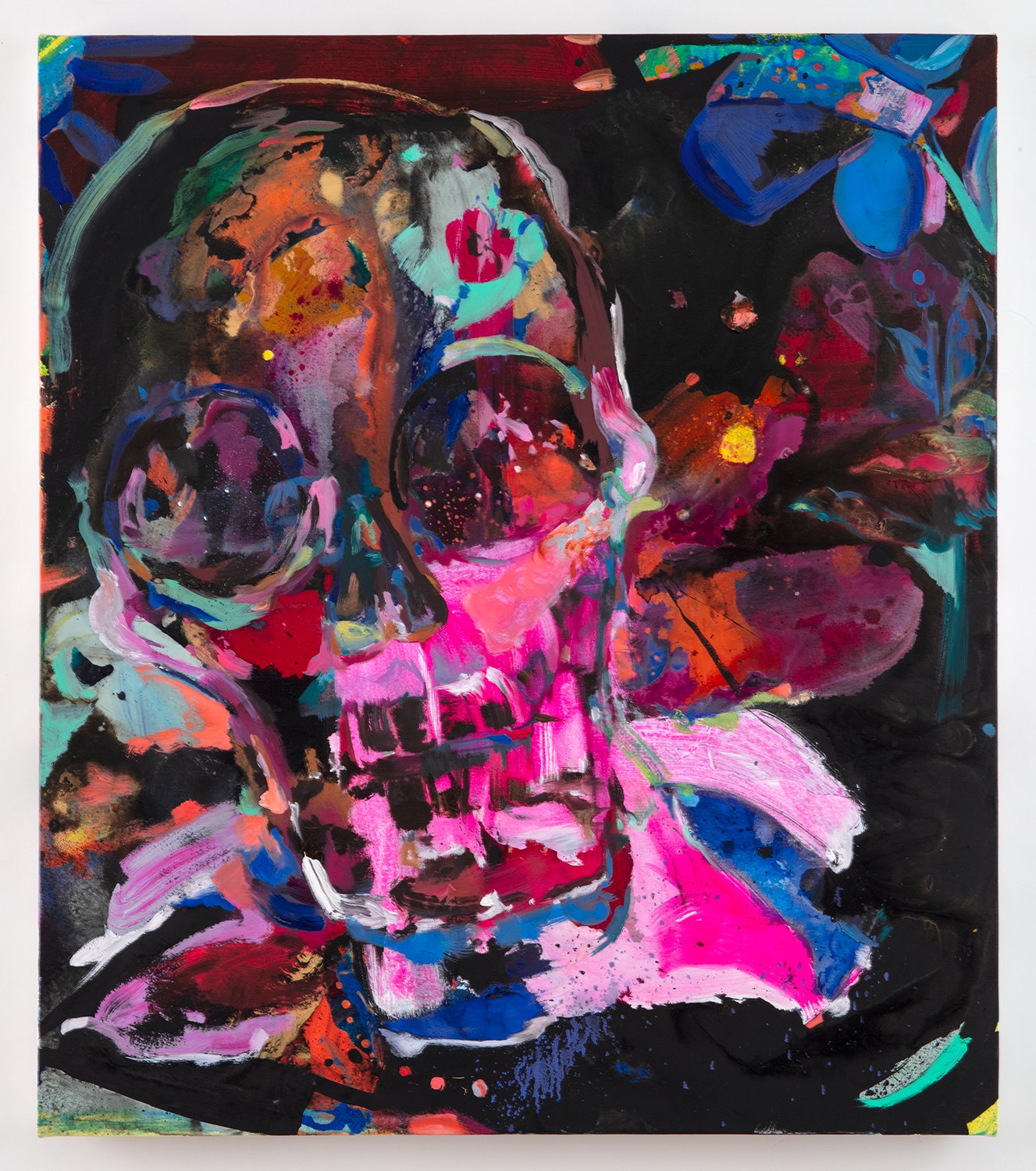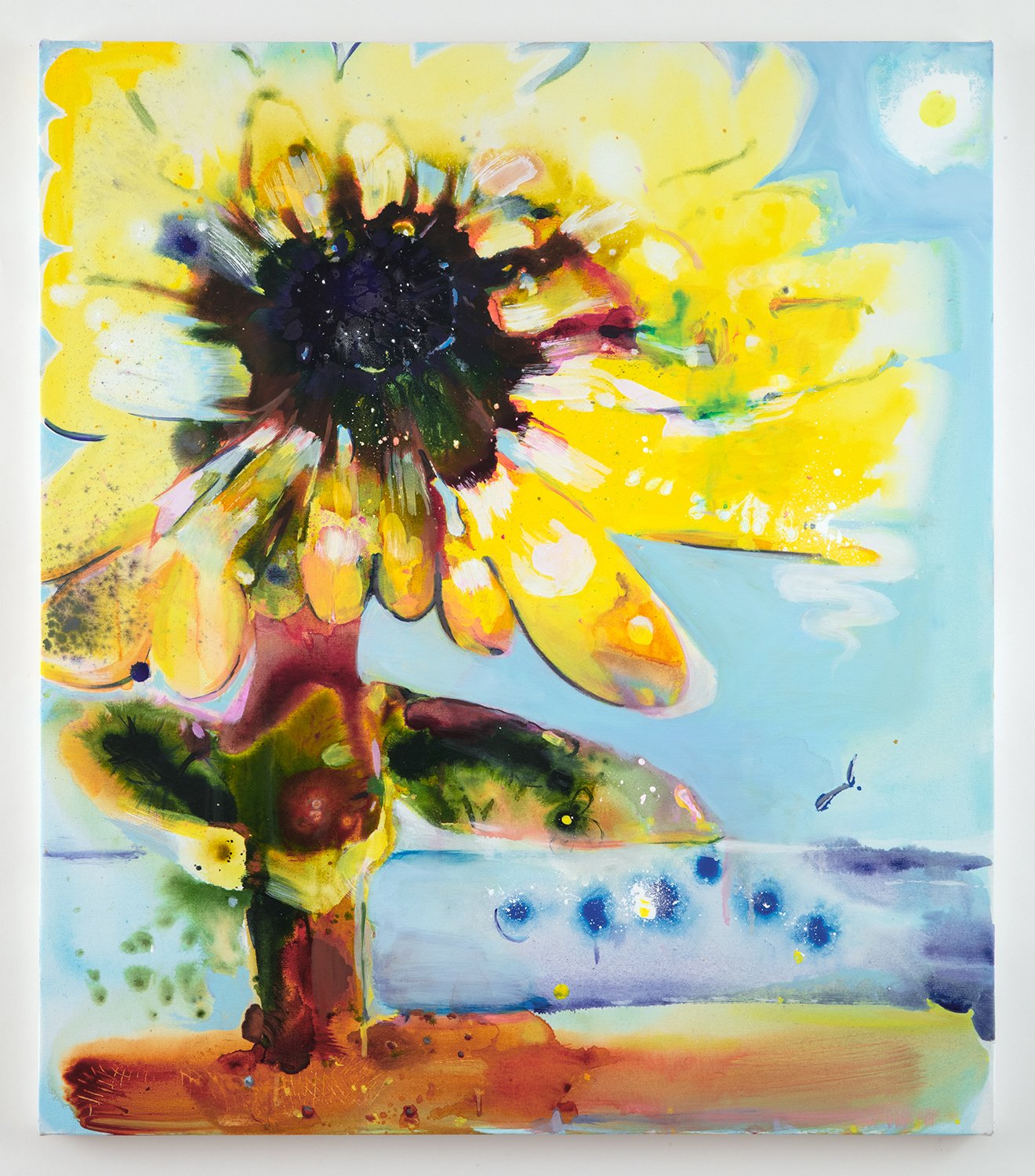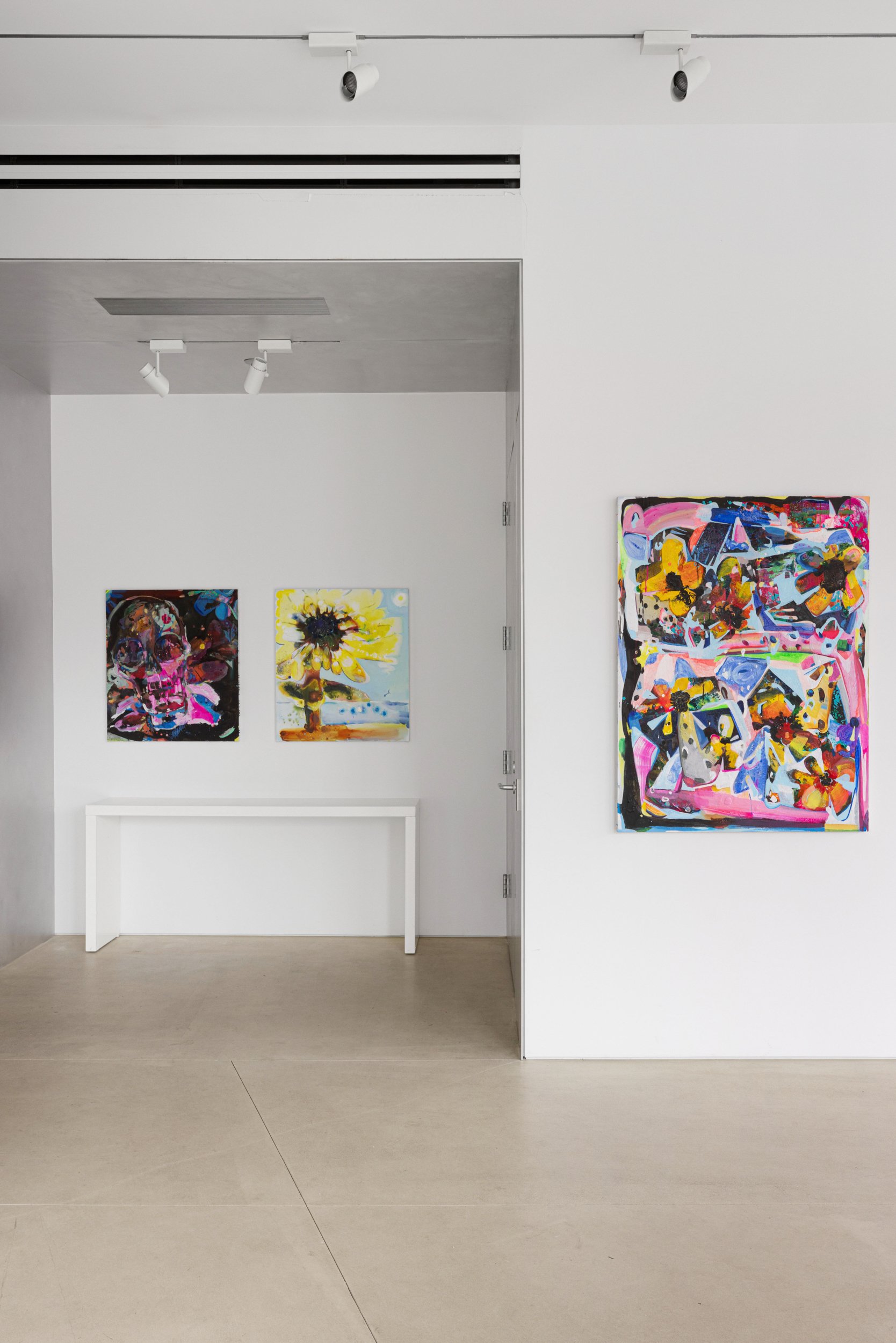Shadowtime
Shad-ow-time
noun
(Neologism from The Bureau of Linguistic Reality)
Definition: A parallel timescale that follows one around throughout day to day experience of regular time. Shadowtime manifests as a feeling of living in two distinctly different temporal scales simultaneously, or acute consciousness of the possibility that the near future will be drastically different than the present.
Origin: Ranu Mukherjee, Alicia Escott, Field Study #009 Participants, California 2015
The paintings and collages in Shadowtime give viewers a false sense of security. The beauty is a comfort but the bottom may fall out. Artworks by Melissa Capasso and Ava Werner each have elements of Shadowtime: the phantom of an uncertain future is in their work, teetering between the sublime and devastation. Werner’s painting and digital collage provide evidence and give the viewer a sober and objective peek at the grim climate path we are on. Capasso’s paintings are a subjective counterpoint. Her paintings feel of-the-moment and speak with a supremely subjective voice mirroring the gravity of our time in real time.
Ava Werner
Ava Werner, Hoover Dam, 2023
Installation shot with Waterlinks, House Flips and Anthropocene Series
Ava Werner’s Anthropocene Series are documents of current place and time in history, specifically related to climate change and uses of water during the Anthropocene—a proposed term for a new epoch related to human impact on the planet. The collage paintings are small and quiet with a staccato rhythm of urgency. Werner is an intuitive colorist with shifting, subdued palettes punctuated with louder bits of neon and complements. After pulling the viewer in with pleasing color, Werner gives us peripheral glimpses into climate warning signs revealing slivers of dystopian reality. Her work contains the quiet-ominous shifts in climate that are sneaking up on us as we go on with our day-to-day lives, reflecting the whispers of anxiety in the understanding that our world is in peril. We are the frogs in a boiling pot. Werner’s collages shuffle shifting naturescapes, architectural elements, and warning signs into abstract compositions. The transitions between elements feel like cinematic jump-cuts; her pleasure of painting and her need to communicate about climate change. Through her collection of photographic images, Werner repurposes printed materials and ephemera which speak directly to our current world and Werner’s work is a historical and personal document of this time. Each slice in her collages come from a specific place, often the aftermath of natural disasters (fire, floods, hurricanes) accelerated by climate changes or manmade disasters waiting to happen (lithium, pools, coal ash ponds, water usage).
Ava Werner Bio
Ava Werner is an American multi-media artist, working with 2D media and installation. Broadly, her work focuses on how humans impact the earth and its resources. Her specific focus for this work revolves around the four basic elements of earth, water, fire and air and how these elements are affected by climate change in the environment.
Werner’s most recent work talks about history, climate change and the 4 elements. She uses her collection of magazines and printed ephemera as re-purposed images. Werner selects imagery of actual unfolding disasters or related to disasters waiting to happen. The uneasy balance in the work conveys how our societies are operating near this precipice. There is a soft-ominous quality to the work, like seeing something out of the corner of your eye that reveals something you already intuitively sensed, and suddenly explains why you feel uneasy.
Werner is a lecturer in the Art and Design Department at California Polytechnic State University. Most recently, Werner had a residency summer 2023 at Vermont Studio Center. Her Waterlinks Installation project with James Werner is ongoing and has been installed in New Zealand, Micronesia and Vanuatu, Australia, California, New York and Maine.
Melissa Capasso
Melissa Capasso, The Formation of Dreams,
(detail) 2023
Installation
Melissa Capasso’s flower paintings explore the cosmos; the flowers embody the vitality and fragility of the universe, of nature and humanity. There is something operatic about this series with high tones and sweeping emotional falls. Capasso speaks of her art practice as a long narrative, a novel she builds in her mind. The flowers are events in Capasso’s perpetual daydream “novel” and vessels of heartbreak, nostalgia, sensory indulgence, and the ever-present void. These works are at once a story of trauma and of healing. Capasso comes at her subject as a gardener and a painter. Her garden is a place of knowledge and she sees nature as omnipotent. Her flowers, dark and bright, candy colors and lurking danger, respond to our current moment; a moment where Barbie and Oppenheimer share the same spaces. The painted flowers melting, wilting, and blowing away feel like a metaphor for humanity: they contain all the feels and, like flowers, are only in bloom for a short time. Capasso’s surfaces, materials and techniques show her willingness to be vulnerable and her absolute openness to go where the work takes her.
Melissa Capasso Bio
Melissa Capasso earned her MFA from Brooklyn College in 2016. Recent exhibitions include several prominent group shows and solo shows at Gold/Scopophilia (Montclair, NJ) and Sweet Lorraine Gallery (Brooklyn, NY).
In a review of her work for Two Coats of Paint, Jennifer Rose Bonilla-Edgington wrote that Capasso’s “work’s energy invites viewers’ engagement and its intricacy stimulates them to search their own minds for connections to the content, sparking the neurons.”
Capasso teaches painting and drawing at Suffolk County Community College and has also taught at Rutgers-Newark. Residencies and honors include the Elizabeth Murray Artist Residency and the Edward F. Albee Foundation Visual Arts Fellowship

